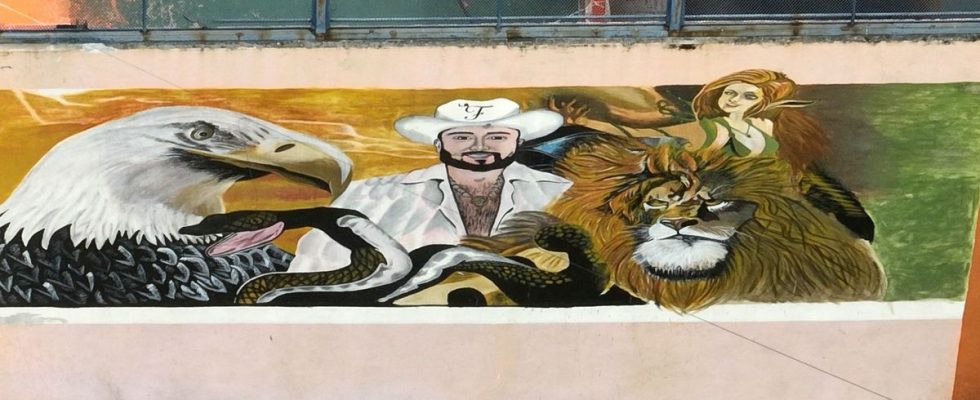Ego, money, weapons. Three explosive elements at the root of rivalries between criminal gangs. Ecuador is no exception. If there is, according to experts, around twenty groups linked to organized crime which are rampant in the country, two main ones are now competing for the iron throne of cocaine. The city of Guayaquil, a strategic port for the export of drugs delivered from neighboring Colombia and Peru, has become Latin America’s main hub for drug exports.
With the explosion in cocaine consumption and production, Ecuador saw its level of insecurity explode until “the mobilization and intervention of the armed forces and the national police” decreed by President Daniel Noboa Tuesday. The result of a merciless war between Los Choneros and Los Lobos to become the kings of coke.
Small criminals become big criminals
Today, the Lobos seem to dominate the drug game. However, they are initially only an emanation of the Choneros. These were created in 1998, according to Lucie Laplace, political science researcher at Lyon-2 University and at the Triangle laboratory. “It was initially a gang of delinquents, small-time drug traffickers” who seized more ambitious development opportunities by “collaborating with Mexican cartels but also former dissident members of the Colombian FARC, notably the Frente Oliver Sinistera,” explains our researcher. “Due to the fragmentation of the criminal landscape following the demobilization of the Fuerzas Armadas Revolucionarias de Colombia (Farc) in 2016, [le trafic de cocaïne] now involves criminal groups of all sizes, structures and objectives,” notes the United Nations Office on Drugs and Crime (UNODC).
Everyone has their own cartel
Los Choneros will then gain power, supported by the Mexican Sinaloa cartel. The latter is forced to diversify its activity, mainly from a geographical point of view, pushed to expand its territory by the armed struggle initiated by the Colombian army and the United States against drugs. Los Choneros will thus prosper on the Ecuadorian coast, geographically strategic in the import-export of cocaine from Colombia and to the United States and Europe. But the more important it becomes, the more the gang is the scene of internal rivalries. It was after the assassination of leader Jorge Luis Zambrano Gonzalez, known as Rasquiña, in 2020 that certain members left the group to create “a federation of criminal groups Nueva Generacion, whose dominant organization is called Los Lobos”. precise Michel Gandilhon, associate researcher at the National Conservatory of Arts and Craftsin the defense security department.
Los Lobos will ultimately find the support of another Mexican cartel: Jalisco Nueva Generación. The latter being Sinaloa’s main rival in Mexico, and wherever they are established. This opposition will logically develop in Ecuador: “the rivalry of the two gangs there is a manifestation of this rivalry between cartels”, summarizes Lucie Laplace. Now, these criminal group formations such as the Lobos and the Choneros “increasingly resemble those of the Mexican cartels, in that they form an alliance of different gangs with one of them always dominating”, develops Michel Gandilhon.
Fragile domination and rise to power
Claiming around 8,000 members, Los Lobos have, it seems, succeeded in establishing a certain domination in the game drugs in Ecuador and “have aggregated other criminal gangs who work for them”. “It’s a bit like a feudal system,” describes Michel Gandilhon. A sign that they attract more attention, specialists have more information on Los Lobos than on Les Choneros, even though they are led by the famous Fito.
It was even Los Lobos who were filmed live this Tuesday taking an entire television set hostage, probably in response to Fito’s successful escape, which caused chaos in the Ecuadorian streets. In addition to their link with Jalisco Nueva Generación, Los Lobos also do business with the mafias of the drug destination countries, notably the Serbs but especially the Albanians. “Balkan traffickers and members of Italian criminal groups have set up mutual aid networks, settling in Ecuador to establish supply lines to European markets,” confirms the UNODC. Finally, Los Lobos have diversified their trafficking and have also developed “an export activity from the Imbabuza gold mine, in addition to extortion and human trafficking,” adds Lucie Laplace.
And if violence exploded this week in the streets of Ecuador, it is more in prisons that it has been expressed for several years. “This is where they confront each other, where they operate, where they recruit,” emphasizes Lucie Laplace. Indeed, “armed, cruel and powerful gangs have taken control of the prisons thanks to corruption, violence and threats to the prison administration,” adds Michel Gandilhon. Some 178 guards and administrative staff are currently being held hostage in the country’s prisons. Executions, riots and mutinies are regularly provoked by rivalries between gangs, with tolls always very high: some 460 people have been killed since 2021, the victims being found dismembered, decapitated or cremated.

